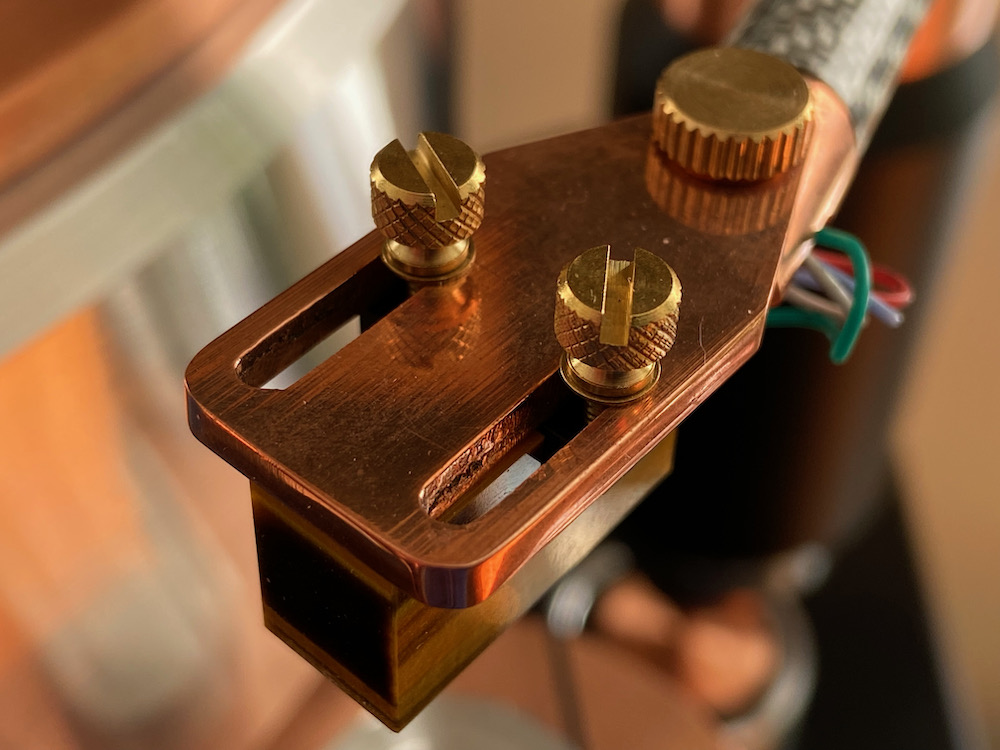Brass headshell screws
What ever you change at the headshell, it will be heard. Or words alike were spoken
many years ago by Thomas Schick when talking about his then new graphite headshell. That was at ETF in Denmark when
sipping some port. Nice memories.
And these words are true, of course no doubt. It is about resonances at microsignal level, and when those resonances
are influenced, the microsignal is as well. Many interesting stories can be read about the sound of headshells or
spacers or wires.. So yes, change of headshell material can be heard easily as well.
Schicks graphite headshell is extremely rigid and is said to be resonance free. Not only the headshell ads to
resonances, the whole turntable does. But the nearer the cartridge, the bigger the influence. Frank Schröder has
developed a resonance free tonearm for OMA. It is 3D-printed and has the structure of a crane. It is carefully designed
so that resonances will not travel along the arm but are faded out in the different triangular shapes. It most certainly
looks very industrial!
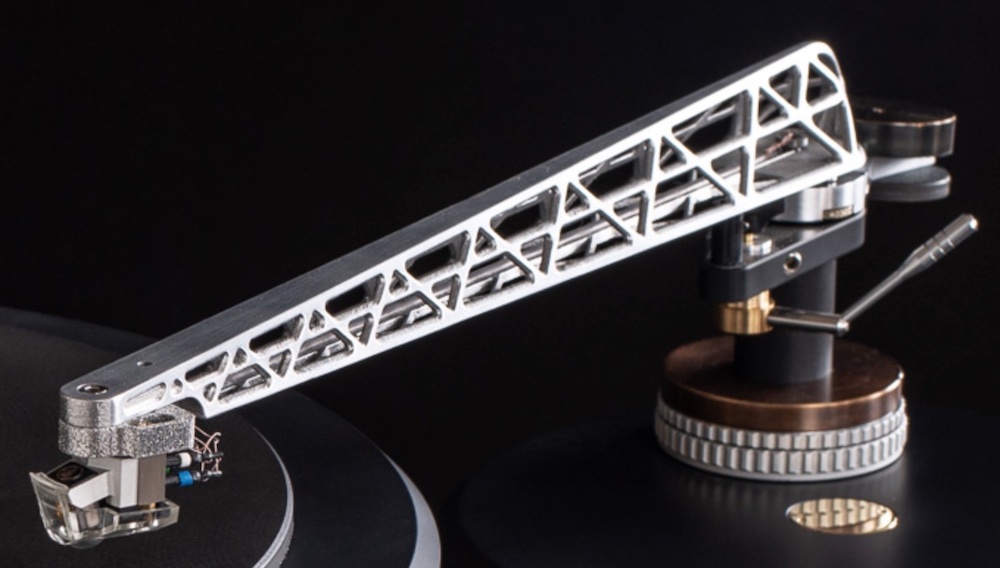
Resonance free tonearm by Frank Schröder.
When talking to Frank he assured me that material has no sound. Physics, he said. This in answer about the copper headshell
by Wilking and how I liked the sound of it. LOL. So it is about the influence material has on resonances.
Brass.
It is a copper and zinc alloy and is relatively easy to work with unlike copper, hence the alloy with zinc. Brass screws
are plenty available where almost none in copper can be found. Brass has its own properties and influences resonances
different than other metals. For instance, Wilking turntables are available
with both copper and brass elements and as result have a different sound signature. So even in the bigger parts of a
turntable, resonances play an important part in playback of music.
Screws for the headshell.
To mount the cartridge screws are used. Many are available, different materials, diferent sizes, different colours (we like it
when it looks neat). Non magnetic material seems logical, so does lightweight. Stainless steel has more weight than aluminium,
and aluminium outweighs plastic. Screws are available with different heads: phillips, slotted, hex and so on. Those all need
a screwdriver which is an extra to hold on to while installing the cartridge. Mounting a cartridge is a precise activity, you
do not want to break the cantilever and it needs to be aligned according to Löfgren, Stephenson or Baerwald, up to your
choice (or believe). Anyway, it is a precise job. As with many other people, I do not use screwdrivers at a daily base and am
not as comfortable with these as with my own hands. Using my own hands allows me to not only use exactly the force I want to,
but gives me the feeling as well needed to do that. Screwdrivers screw that up. So when I saw the brass knurled head screws
I was in doubt.. Yes, this allows me to mount the cartridge more easily with only my hands but it will be heavier compared to the
aluminium screws, as well as the stainless steel ones I am currently using. But these will resonate differently as well. And I
prefer brass over stainless steel and aluminium. So I ordered a set through eBay, not really cheap, about as expensive
as a new record.
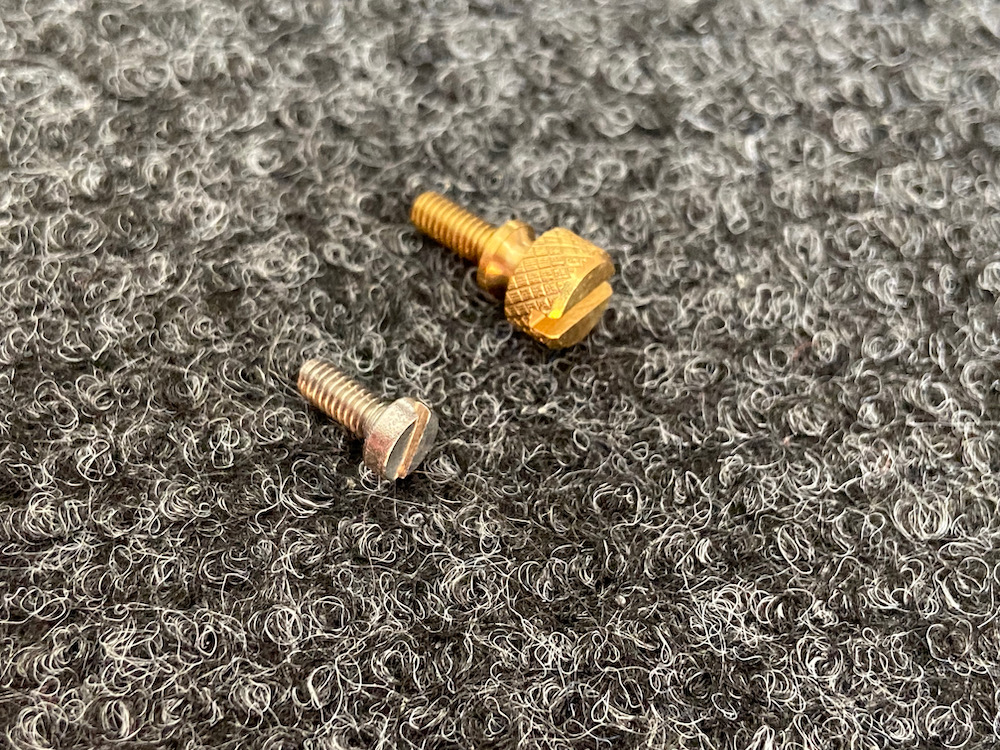
Direct comparison, bigger, heavier, yellow..
The proof..
So when the screws were delivered I was first curious about the difference in weight. Unscrewing the old, inserting the brass
ones, one by one with the idea not having to align the cartridge again. That resulted in a VTA of almost 1.5 mN extra!
When checking the alignment (just to be sure) the offset angle was slightly changed to less, probably because of unscrewing
the slotted head screws using a screwdriver? (Yes, conscientious incorrect reasoning, I know)
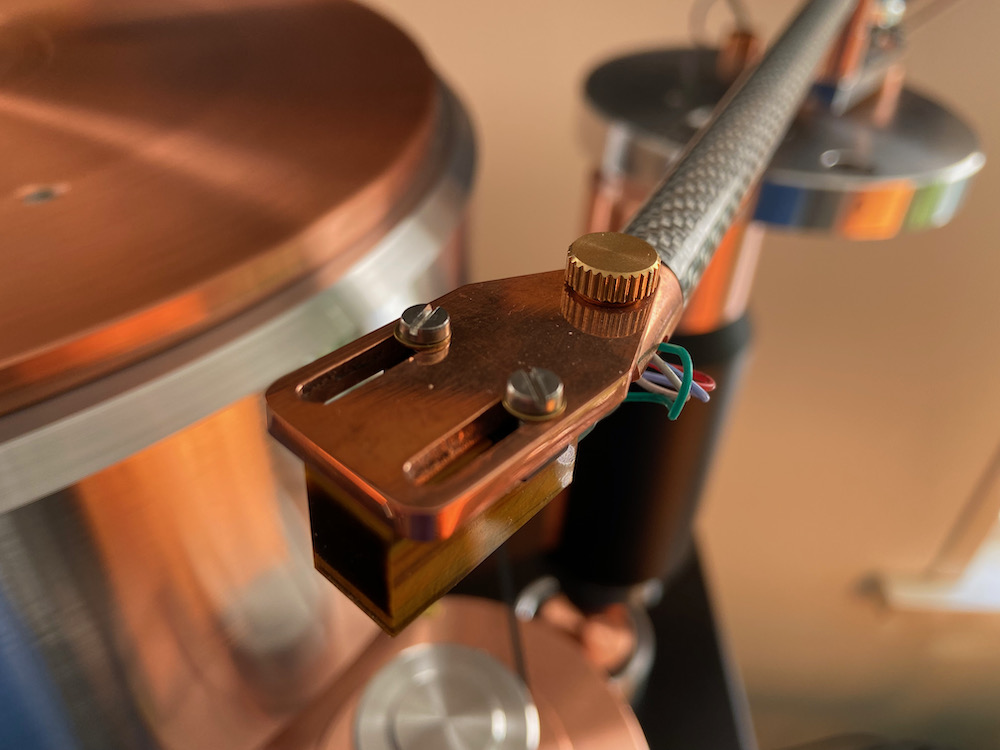
Cartridge mounted using stainless steel screws
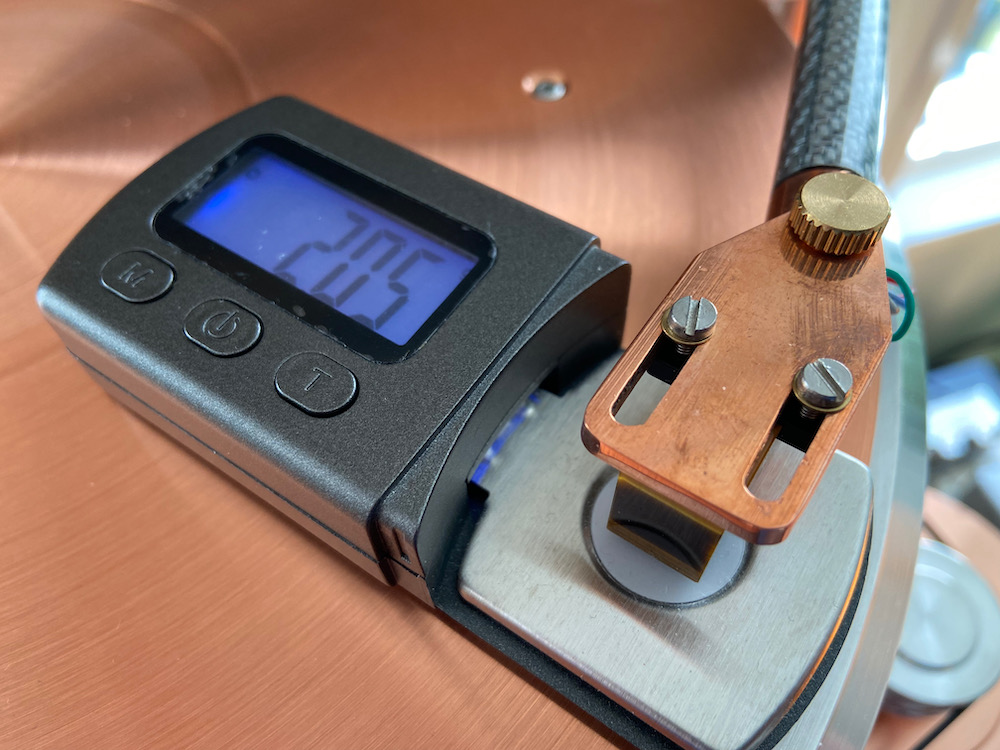
VTA with stainless steel screws
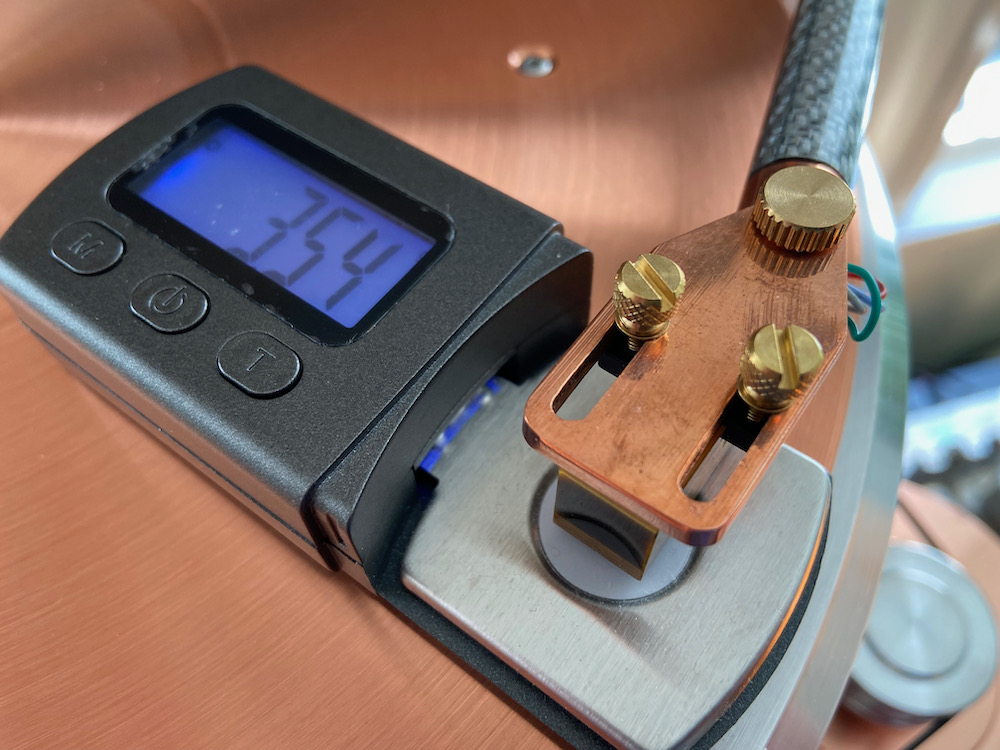
Extra VTA from the brass screws
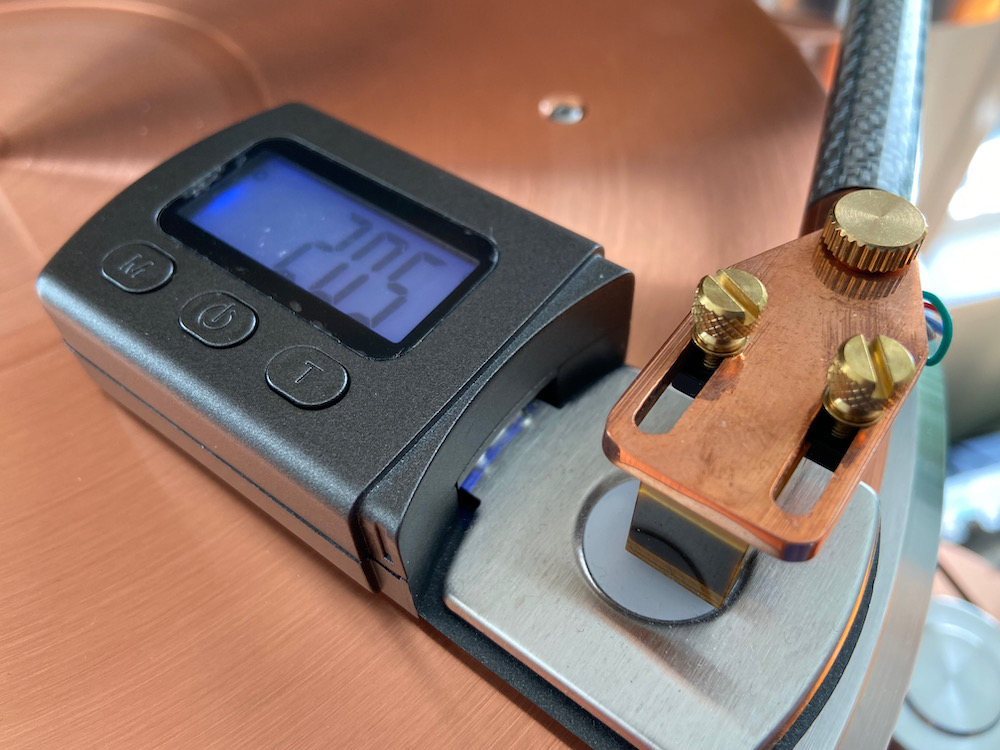
Corrected VTA with brass screws
So after correcting the VTA and alignment the first record was played with the brass screws. The operation took about fifteen
minutes and the same record was put on that was played just before..
Result!
Yes! A noticeable difference for sure, and one that I like. As I learned that brass can not have a sound, I do like its
effect on the playback of records. Music played with more density and focus and keeps it lucidity. Tone remains just about
the same however brass instruments seem to have a sharper edge, livelike! So why brass instruments? Is that a
coincidence? Maybe.. In the end it is all about perception and everybody is influenced by what is seen, so am I. And
it is subjective for sure. Tweaks like these are all about fun, spending time with the hobby, which is a goal at its own.
That works for me and keeps me going, exploring these smaller tweaks.
Just like Thomas Schick says: "With this type I gained the most favourable sound results".
